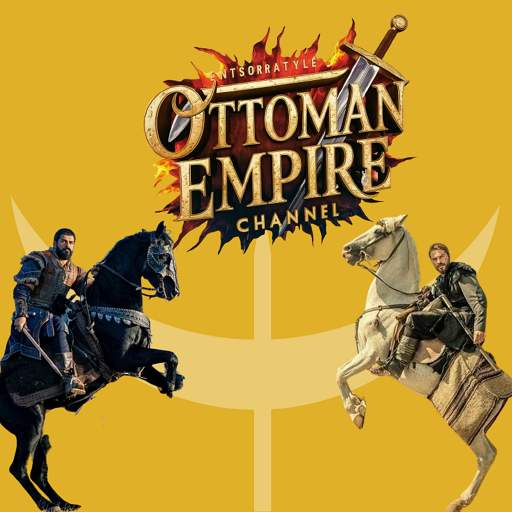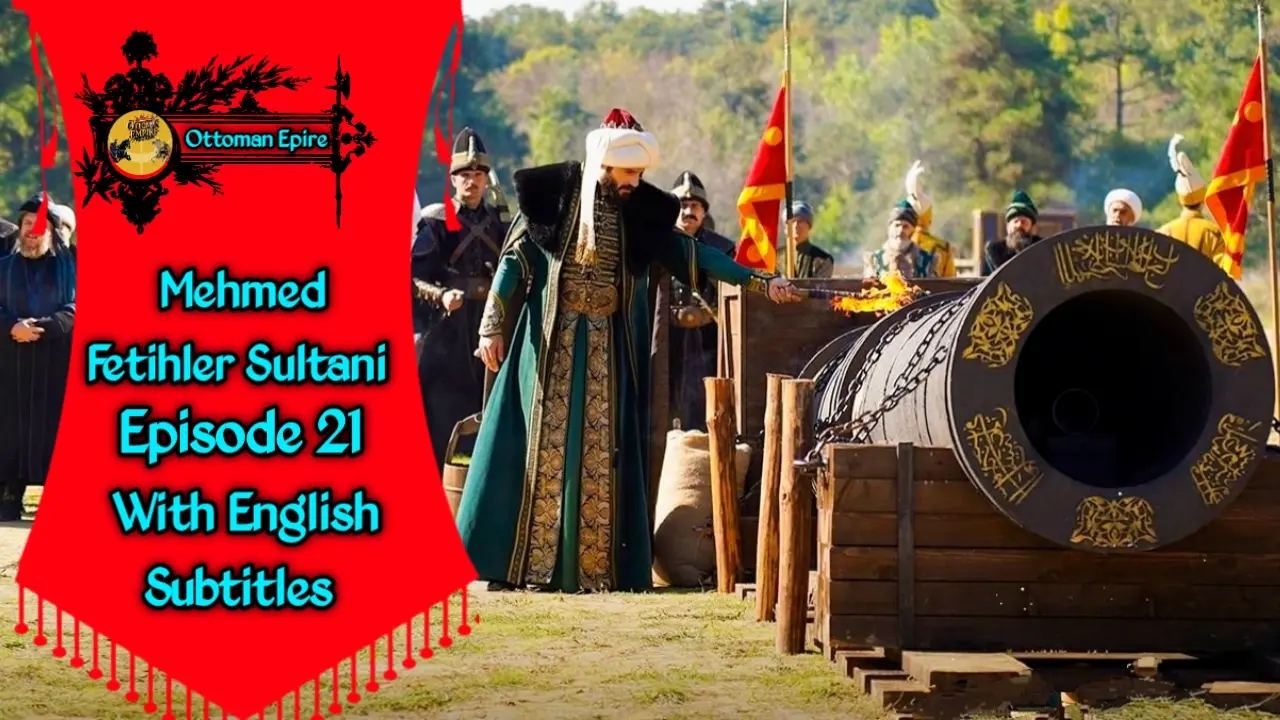Mehmed Fetihler Sultani Season 2 Episode 21
The Poisoned Robe Conspiracy
Mehmed Fetihler Sultani Season 2 Episode 21
Episode 21 opens with one of the most dangerous plots in Ottoman history, as Teke Sancak Bey İsmail attempts to place a poisoned robe on Sultan Mehmed during the grandest council ever assembled. The tension is palpable, and the stakes are immense, as this is not merely a political challenge but a direct threat to the Sultan’s life. The narrative draws readers into a world where betrayal and ambition exist even in the highest echelons of power. This opening scene sets a dramatic tone, illustrating the fragility of trust in leadership and highlighting the constant vigilance required to navigate the treacherous waters of court politics. It shows that historical leadership involved not only military strategy but also acute awareness of internal conspiracies.
Zağanos’ Critical Intervention
Zağanos, though absent from the council, becomes the unsung hero by uncovering the assassination attempt. His intervention is decisive, preventing what could have been a catastrophic loss for the Ottoman leadership. The episode portrays him not just as a military figure but as a strategist with foresight and loyalty, emphasizing the importance of intuition, intelligence, and quick action in leadership. His discovery also raises questions about trust, hierarchy, and redemption, offering readers a complex view of how past missteps do not entirely define a leader’s value. Zağanos’ role shows the nuanced interplay between personal loyalty and political necessity.
Mehmed’s Response and Justice
Once informed of the plot, Sultan Mehmed faces the critical decision of whether to restore Zağanos’ honor and position. This segment illustrates Mehmed’s wisdom in balancing justice with practicality, reinforcing his reputation as a decisive and fair ruler. His approach highlights the intellectual and moral dimensions of leadership: recognizing loyalty, punishing treachery, and maintaining authority. For readers, this demonstrates that historical leadership required constant judgment calls, where human factors, political implications, and long-term strategy all intersect to determine the fate of empires.
Divan Rivalries and Zağanos’ Past Decisions
Zağanos’ previous actions, including sending Hamza, Bali Bey, and the akıncı forces to Mora without the Sultan’s approval, resulted in the death of Demetrios’ child and led to his removal from the divan. This episode explores the deep-seated tensions between Zağanos and Çandarlı Paşa, showing how rivalries, personal grudges, and questions of accountability can shape high-level politics. The narrative emphasizes that even powerful figures must navigate internal politics carefully, as missteps can have long-lasting consequences. Readers gain insight into the complex relationships and political intricacies that influenced Ottoman decision-making and the delicate balance of power within the empire.
Haliç Atrocities and Military Discipline
The Janissaries’ violent actions in Haliç spark outrage and demand immediate attention. Sultan Mehmed’s response demonstrates the importance of discipline and morale within the army, as unchecked brutality could undermine the very forces he relies upon. This episode details how leadership extends beyond commanding troops to ensuring order, justice, and ethical governance within military ranks. For readers, this illustrates that military effectiveness relies not just on strategy but also on maintaining cohesion, respect, and motivation among the troops, especially before a major siege.
Guistinianni’s Espionage Tactics
Meanwhile, Guistinianni advances his intelligence operations through Lorenzo, seeking to identify Ottoman spies within Constantinople. The episode delves into the strategic and psychological dimensions of espionage, showing how information can shift the balance of power without a single battle being fought. Guistinianni’s investigations also reflect the pervasive climate of suspicion and the importance of counterintelligence during times of war. Readers gain an appreciation for how espionage, secrecy, and timely intelligence were as vital as armies and walls in historical conflicts.
Challenges for Key Byzantine Figures
Key Byzantine actors like Lomellino, Minotto, and Lorenzo navigate the consequences of Ottoman strategies and internal conspiracies. Their decisions, responses, and survival tactics highlight the interplay of ambition, loyalty, and political pragmatism. The narrative explores the pressures on these figures, showing how individual choices could influence broader strategic outcomes. Readers are given a nuanced view of the Byzantine side, understanding that historical events were shaped not only by the strength of armies but also by the ingenuity, foresight, and sometimes desperation of the leaders involved.
Sultan Mehmed’s Grand Council
Sultan Mehmed convenes an extraordinary council to discuss the assassination plot, Haliç atrocities, and siege preparations. The episode portrays this divan as a crucial strategic hub, demonstrating the value of consultation, debate, and coordination in governance. Including the sancakbeys and senior advisors reflects the Sultan’s inclusive yet authoritative style, reinforcing the importance of structured deliberation before major military actions. For readers, this highlights how Ottoman decision-making combined collective intelligence with centralized authority to prepare for high-stakes operations.
Interplay Between Palace Intrigue and Military Strategy
Throughout the episode, palace conspiracies, rivalries, and personal vendettas directly influence military decisions and readiness. The narrative skillfully intertwines political intrigue with strategic planning, showing that every betrayal, revelation, or bold move can affect morale, preparedness, and tactical choices. Readers understand that historical warfare was as much about intelligence, negotiation, and leadership dynamics as it was about physical combat, making the episode both engaging and educational.
Rising Tensions Before the Siege
As the episode progresses, both Ottoman and Byzantine forces brace for the imminent siege of Constantinople. Conspiracies, espionage, and leadership challenges heighten tension across both camps. Mehmed’s foresight, combined with Guistinianni’s countermeasures, ensures that every side is preparing for critical confrontations. This section of the episode emphasizes the high stakes, the uncertainty of outcomes, and the layered complexity of leadership, giving readers a comprehensive picture of the historical drama.
Conclusion and Episode Highlights
Episode 21 concludes by weaving together palace intrigue, personal rivalries, military preparation, and intelligence operations. The poisoned robe plot, Zağanos’ redemption, Haliç tensions, and espionage activities set the stage for the looming siege. Readers are left with a multidimensional narrative that balances dramatic storytelling with historical strategy, offering insight into both Ottoman and Byzantine political, military, and personal dynamics. This episode solidifies the tension and anticipation for the next major confrontation.
Episode Table: Main Events, Details, and Impacts
| Main Event | Details | Impact |
|---|---|---|
| Poisoned Robe Plot | Teke Sancak Bey İsmail attempts to place a poisoned robe on Sultan Mehmed. | Creates high palace tension and tests loyalty, putting the Sultan’s life at risk. |
| Zağanos’ Redemption | Zağanos uncovers the assassination attempt, saving the Sultan. | Reinforces loyalty, trust, and the possibility of restoring Zağanos’ honor. |
| Haliç Atrocities | Janissaries commit violent acts in Haliç, alarming Sultan Mehmed. | Leads to strategic and disciplinary responses, boosting morale and order before the siege. |
| Guistinianni’s Espionage | Guistinianni investigates Ottoman spies and uses Lorenzo for his plans. | Highlights intelligence, counterintelligence, and the complexity of defending Constantinople. |
Bullet-Point Summary
- Teke Sancak Bey İsmail tries to assassinate Sultan Mehmed with a poisoned robe.
- Zağanos intervenes, uncovering the plot and risking his honor.
- Sultan Mehmed must decide whether to restore Zağanos’ status.
- Divan rivalries intensify, especially between Zağanos and Çandarlı Paşa.
- Janissaries’ violent actions in Haliç prompt Sultan Mehmed to take strict measures.
- Guistinianni uses Lorenzo to track Ottoman spies in Constantinople.
- Key Byzantine figures Lomellino, Minotto, and Lorenzo navigate conspiracies and strategic pressures.
- Sultan Mehmed convenes a grand council including sancakbeys to prepare for the siege.
- Palace intrigue and espionage directly influence military and strategic decisions.
- Both sides brace for the looming siege, heightening tension and stakes.
FAQs of Mehmed Fetihler Sultani Season 2 Episode 21
A poisoned robe plot, Zağanos’ redemption, Haliç tensions, and espionage shape the episode.
Teke Sancak Bey İsmail attempts to place a poisoned robe on the Sultan during the grand council.
Zağanos uncovers the assassination attempt and prevents the plot, risking his honor and reputation.
Janissaries commit violent acts, prompting Sultan Mehmed to enforce discipline and maintain army morale.
He investigates Ottoman spies using Lorenzo and strategizes to protect Constantinople from internal threats.
- Mehmed Fetihler Sultani Season 2 Episode 20 Tensions Rise Before the Siege
- Mehmed Fetihler Sultani Season 2 Episode 19 Siege Strategies and Court Intrigue
- Kudus Fatihi Selahaddin Eyyubi Season 2 Episode 38 Rise as Vizier
- Mehmed Fetihler Sultani Season 2 Episode 16 The Reunion of Two Brothers
- Mehmed Fetihler Sultani Complete Story of Both Seasons

